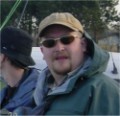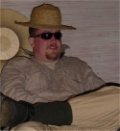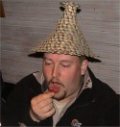Materials
Apart from organizing the materials on your desk, the most important thing to remember is only to use the best quality you can get. Not only is good quality easier to work with, it's faster too and leads to nicer flies. Sometimes, the best quality is expensive, but it's well worth the expense and if you're selling your flies, the price should reflect the price of materials. If you trip over something that really stands out, don't be cheap – buy all you can afford! Natural materials like hair and hackles vary greatly in quality and if you trip over, for instance, exceptionally good quality elk-hair, never hesitate, but buy all you can! It might be years before you find some like it again!
And more importantly, you must know your materials. It is very important to have a thorough knowledge in handling materials for the best results. I could mention many things, but biots and quills for bodies spring to mind. This is basic flytying wisdom, but if you don't know that they should both be soaked prior to tying, then you'll end up breaking a lot of them on the hook and losing time! Knowing your materials also means that you should know that a wing of artic fox should be tapered to a point in order for the fly to swim and move properly. Knowing your materials in general gives better, more durable and prettier flies. And it makes them quicker to tie.
Material-cost is also important – the more expensive your materials are (and unfortunately, the best is expensive) the more expensive the finished fly will be. But this is one shortcut you must never take. Only the best is good enough for the production flytyer.
Consider an order for 100 dryflies for example. If possible, I always use dry fly saddle hackles for production tying. Why? It’s simple really – one good quality saddle-feather will tie as many as 12 or 15 flies, depending on dressing. And that’s a big time–saver as well as material-saver. Even though top quality saddles are expensive, only the best will tie so many flies on one feather and in the end, you’ll probably end of saving money after all. The best feathers on the market in my experience are Whiting’s – and at Whiting’s they actually estimate that one Platinum Grade Dry Fly Saddle will tie over 2.500 flies (yes, two thousand five hundred). A Platinum Grade Saddle costs around 125 dollars in the US – you do the math :-) (Thanx to Steve Schweitzer at Whiting Farms for this information).
Hooks
I want to add a comment on hooks as well. Again, I advice you to use only the best. Not only do they hook more fish, but most important in this immediate relation, they are less prone to breaking in your vice half way through a tying. I've broken many hooks in the vice, but I've always been very pleased with the quality of Partridge, Tiemco and Kamasan and have very rarely come across one that is flawed. And remember to keep them ready at hand, especially if they are small. I often find it an advantage to take them out of the box and arrange them in a piece of foam (I use the edge of my tool-caddy).
Threads
There's not an awful lot to be said about threads, but I will add some comments anyway. First of all, I find it very important to use the thickest thread that the pattern in question allows. Thicker threads are stronger and they won't break as easily when they (and they will) come in contact with the hook point. This is bound to happen every once in a while when tying large numbers of flies. Further more, they tie stronger flies and are generally quicker to tie with as they more easily build up heads and so on.
I don't generally use GSP-threads since they are more troublesome to tie with and harder to cut when you finish the fly. I'll always prefer a good, prewaxed multi-strand nylon and in my humble opinion, the best on the market as it is now are UNI and Bennechi. UNI comes in both 6/0 and 8/0 and is a great, all-round tying thread and Bennechi comes in a 12/0 that's good for smaller flies. If I'm tying small nymphs, I have a weakness for Orvis 10/0, but it's a delicate thread that won't stand much abuse.
If I were to give some guidelines, which is very difficult as so much depends on the specific pattern, I'd say that I use 6/0 on hook sizes down #10 and for #12 and smaller I'll usually use either Bennechi 12/0 or UNI 8/0. Again depending on pattern, I tie flies as small as # 22 with 8/0. But perhaps the best thing about using a thick thread is that it forces you to keep the number of wraps to an absolute minimum to avoid unnecessary bulk, resulting not only in tidier flies, but also in time saved!!! And as an added bonus, it makes you a better tier too :-)
In general of course it's very important to know and be comfortable with your thread. Know how hard you can pull on it, know how to manipulate to lie flat on the shank, how much to twist it to strengthen it for hairwings for example. OK, so there was more to be said that I thought :-)
Lars Chr. Bentson
Last week: part 1 Next week: to business.
"Viking" Lars larscb@mail1.stofanet.dk is an archeologist and EFFF instructor. An amazing flytyer and part of last year's Denmark or Bust team, he believes that flycasting should be an adventure.













